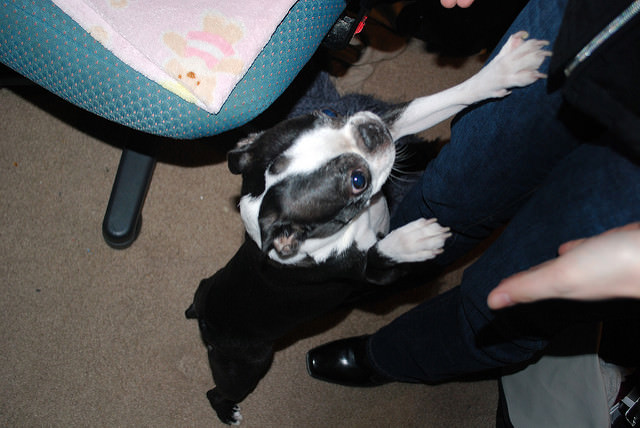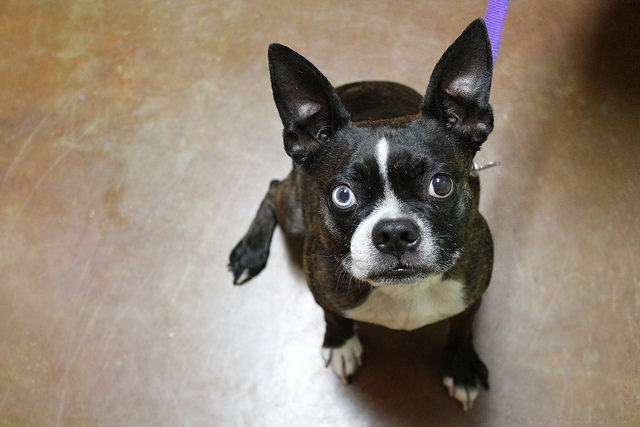Boston Terriers are happy dogs that love life, which can make them a bit over-zealous when it comes to asking for things they want. This can equate to jumping on you for things like attention, food, toys, etc. And chances are, when they were puppies, you thought nothing about bending over and picking them up or petting them when they put those front paws on you. But every time you did that, you reinforced the behavior. Luckily, there is a way to reverse this accidental training. The following is how to teach your Boston Terrier to stop jumping on people.

Why Your Boston Terrier Jumps On People
Dogs are opportunistic creatures. This means if they can do something to get what they want, they will. As mentioned above, jumping up usually starts when your Boston was a puppy and he put his cute little paws on you to get your attention. Understandably, you couldn’t resist. But your puppy just learned that putting his two front paws on you gets him what he wants and he will do it more in the future. So unless your Boston is jumping on people out of fear or aggression (in which case, you should seek a professional dog trainer for help), he is doing it because it gets him what he wants – attention, a toy, food, etc. The good news is that this makes it easy to stop the behavior. All you have to do is make sure your Boston is not being rewarded for it. Then, give him another behavior to do instead that is rewarded. Problem solved.
3 Steps To Getting Your Boston Terrier To Not Jump On People

#1 – Stop Rewarding The Jumping
Every time your Boston jumps on someone, that person needs to ignore her completely. The best thing to do is turn around and walk away. Even if they shout “down,” “no,” and/or push her away – negative attention is still attention. The trick is that every single person, 100 percent of the time, needs to do this. One person saying, “Oh, I don’t mind,” and then giving your dog what she wants will make the behavior stronger, so insist upon your rules.
#2 – Ask For A Conflicting Behavior
Most people ask for a “sit.” Your Boston Terrier can’t sit and jump up at the same time. There are two ways to do this: wait for your Boston to offer a sit, or give the cue “sit” and then reward her when she responds. The reward should be whatever your Boston was jumping on you for in the first place – petting, a toy, a treat, even her food dish! Anything your Boston Terrier normally jumps up on you for, she now only gets if she is sitting. If your Boston has hip issues, opt for a calm and still “four on the floor.” You will wait until your Boston is standing quietly and then reward. This takes some training and patience, but it will work because, as mentioned above, dogs repeat behaviors that get them what they want. For some really excited young Bostons, you may find that “down” works better than “sit” because it’s hard for them to “spring up” from a down position.
#3 – Management
This is the last piece of the puzzle and it’s what you have to do while your Boston Terrier is learning to sit for things, which won’t happen overnight. Having your Boston Terrier on a harness with the leash dragging can help with jumping for a couple reasons. It’s useful when you meet that pesky person that lets (or worse, encourages!) your Boston jump on them – you can just step on the leash so he can’t physically practice the behavior. Or maybe you are in a situation that is just too exciting for him at this point in his training for him to remember his manners. Again, stepping on the leash can help. Finally, you can lead him away from the person altogether, let him calm down, and then bring him back to try the greeting when he is more settled.
